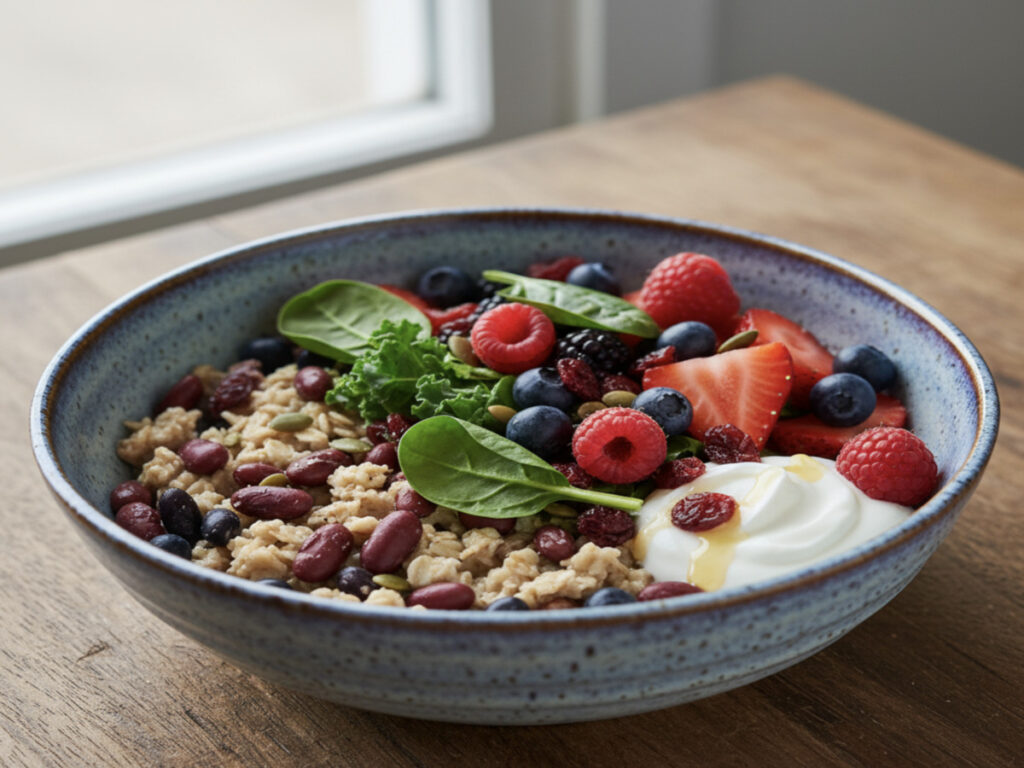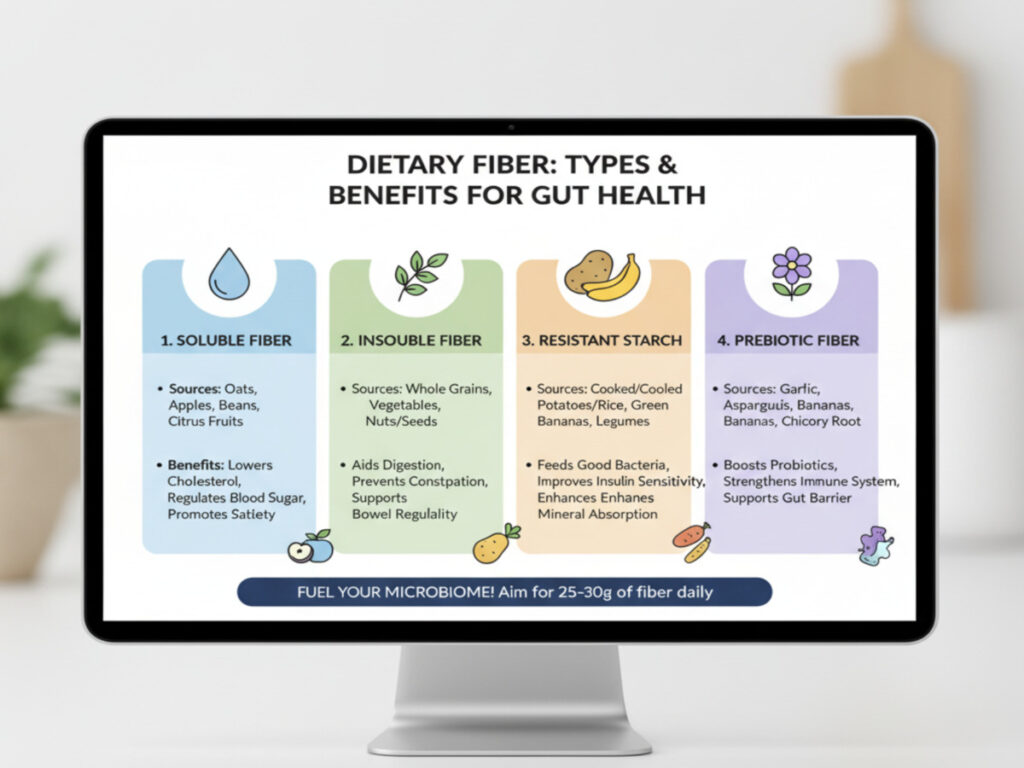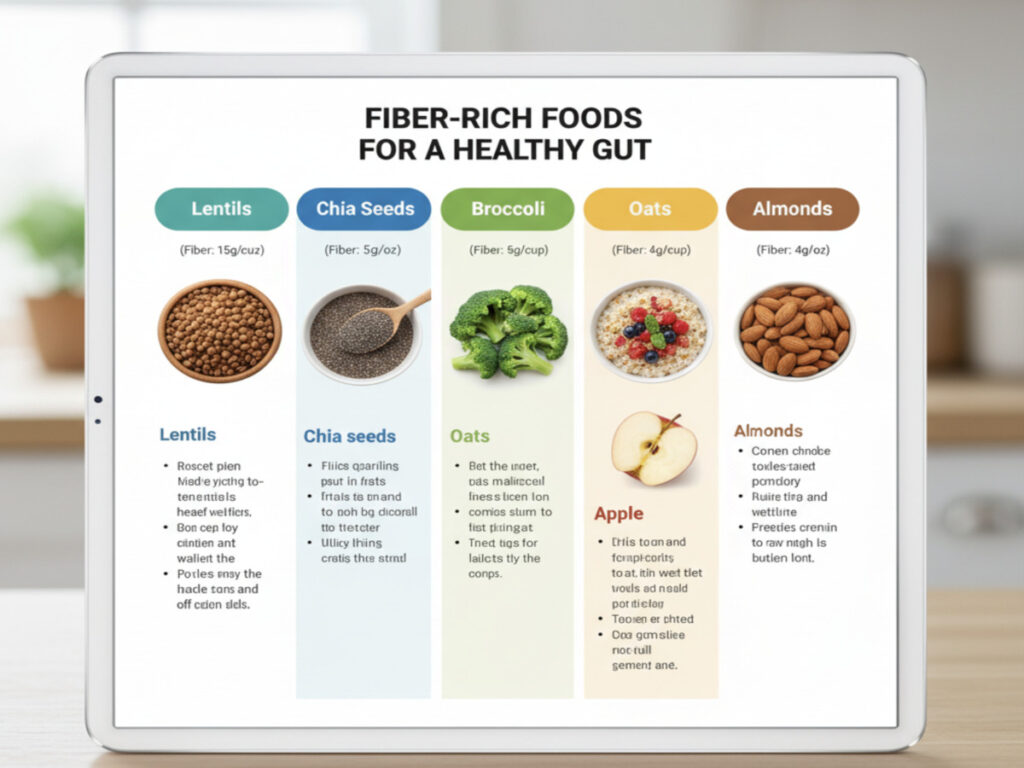Introduction: What Is Fibermaxxing?
Fibermaxxing is the intentional practice of maximizing dietary fiber intake to enhance gut health, increase satiety, and support long-term metabolic and cardiovascular wellness. Unlike simply “eating more fiber,” fibermaxxing involves strategically diversifying fiber sources—soluble, insoluble, resistant starches, and prebiotics—to create an optimal dietary pattern.
In the U.S., the average adult consumes only 16 grams of fiber per day, well below the recommended 25–38 grams. This chronic deficiency contributes to digestive disorders, obesity, and increased chronic disease risk. Fibermaxxing helps bridge this gap naturally with whole foods instead of relying solely on supplements.

The Science Behind Dietary Fiber
Dietary fiber refers to plant-based carbohydrates that resist digestion in the small intestine and reach the colon largely intact.
- Soluble Fiber: Dissolves in water to form a gel, slows digestion, stabilizes blood sugar, and lowers LDL cholesterol.
- Sources: oats, beans, apples, flaxseeds.
- Insoluble Fiber: Adds bulk to stool, prevents constipation, and supports regularity.
- Sources: whole grains, nuts, vegetables.
- Resistant Starch: Feeds beneficial gut bacteria and produces short-chain fatty acids (SCFAs) with anti-inflammatory effects.
- Sources: green bananas, cooled potatoes, legumes.
- Prebiotic Fiber: Selectively feeds beneficial microbes, supporting microbiome diversity.
- Sources: chicory root, onions, garlic, Jerusalem artichoke.
📊 Stat: A 2019 meta-analysis in The Lancet found that people consuming 30+ grams of fiber per day reduced cardiovascular disease risk by 25% compared to low-fiber consumers.
Benefits of Fibermaxxing
Gut Health & Microbiome Support
Fibermaxxing provides diverse fuel for gut bacteria, promoting microbiome balance and resilience.
Benefits include:
- Reduced risk of IBS, diverticulitis, and constipation.
- Improved nutrient absorption from food.
- Enhanced immune defense via SCFA production.
Expert Quote:
“Maximizing dietary fiber is one of the most powerful ways to cultivate microbiome diversity and digestive resilience,” says Dr. Laura Michaels, RD, gut health specialist.
Satiety & Weight Management
High-fiber meals slow gastric emptying, helping regulate appetite and reduce overeating.
Key outcomes:
- Longer-lasting satiety.
- Better blood sugar control.
- Reduced cravings for ultra-processed snacks.
Tip: Combine fiber with protein and healthy fats for maximum satiety.
Long-Term Cardiometabolic Wellness
Fibermaxxing supports lasting wellness beyond digestion and appetite.
- Lowers LDL cholesterol by binding bile acids.
- Reduces Type 2 diabetes risk by stabilizing glucose.
- Supports healthy weight for cardiovascular protection.
Types of Dietary Fiber and How They Work
| Fiber Type | Benefits | Food Sources |
|---|---|---|
| Soluble | Lowers cholesterol, regulates blood sugar | Oats, beans, apples, flaxseeds |
| Insoluble | Improves bowel regularity, prevents constipation | Whole grains, nuts, leafy vegetables |
| Resistant Starch | Feeds gut bacteria, reduces inflammation | Green bananas, cooled potatoes, legumes |
| Prebiotic | Boosts microbiome diversity | Chicory root, garlic, onions, Jerusalem artichoke |

Actionable Fibermaxxing Strategies
- Increase Fiber Gradually – To avoid bloating, add 2–3 grams daily until reaching target intake.
- Stay Hydrated – Drink at least 2 liters daily since fiber works best with water.
- Diversify Sources – Mix soluble, insoluble, prebiotic, and resistant starches.
- Pair with Protein & Healthy Fats – Improves satiety and nutrient absorption.
- Include Fiber in Every Meal – Aim for 8–10 grams per meal.
- Use Smart Cooking Techniques – Cooling cooked potatoes and rice increases resistant starch.
- Track Intake – Use a food diary or app until the habit is automatic.
Practical Checklist for Daily Fiber Optimization
- ✅ 5+ servings of vegetables
- ✅ 2–3 servings of fruits
- ✅ 3+ servings of whole grains
- ✅ Legumes 3+ times per week
- ✅ Nuts or seeds daily
- ✅ 2–3 liters of water
Fiber-Rich Foods Table
| Food | Serving | Fiber (g) |
|---|---|---|
| Lentils | 1 cup cooked | 15.6 |
| Chia Seeds | 2 tbsp | 10.0 |
| Broccoli | 1 cup cooked | 5.0 |
| Oats | 1 cup cooked | 4.0 |
| Apple | 1 medium | 4.4 |
| Almonds | 1 oz | 3.5 |

Expert Insights on Fibermaxxing
“Americans consistently underconsume fiber. Fibermaxxing bridges the gap with real foods, not pills.”
— Dr. Michael Stern, MD, Nutrition Researcher
“High fiber intake supports the gut, heart, and metabolism, making it a cornerstone of preventive medicine.”
— Dr. Emily Torres, Functional Medicine Specialist
Common Myths & FAQ
Q1: Can I rely on fiber supplements alone?
A: No. Whole foods provide prebiotics and phytonutrients supplements lack.
Q2: Does fiber cause bloating?
A: Only if added too quickly. Gradual increases plus hydration prevent discomfort.
Q3: Is fiber just for weight loss?
A: No. It reduces chronic disease risk, strengthens immunity, and improves digestion.
Q4: What’s the ideal daily fiber intake?
A: Women: 25 g/day, Men: 38 g/day (adjust for age, tolerance, and goals).
Authoritative Resources
- American Heart Association – Dietary Fiber
- National Institute of Diabetes and Digestive and Kidney Diseases
- Academy of Nutrition and Dietetics – Fiber
Conclusion & Call-to-Action
Fibermaxxing is more than a diet tweak—it’s a lifestyle strategy that supports digestion, satiety, and long-term health. By incorporating diverse fiber sources, staying hydrated, and aiming for 25–38 grams daily, you can strengthen your gut, improve metabolic function, and reduce chronic disease risk.
👉 Next Step: Track your fiber intake for a week. Gradually work up to your target, and prioritize real, whole food sources. Your gut—and future health—will thank you.

